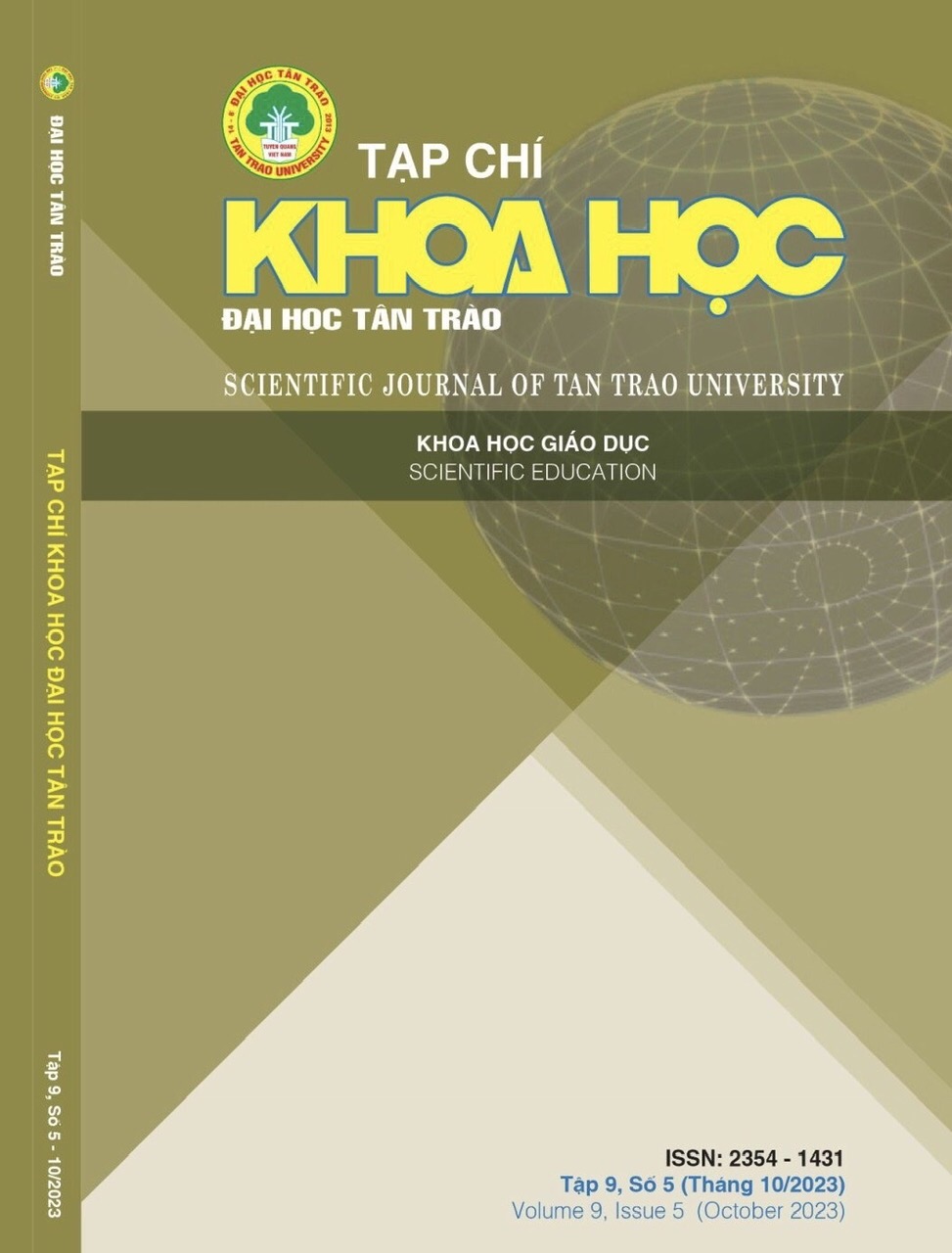IMPROVING THE EFFICIENCY OF INFORMATION TECHNOLOGY APPLICATION FOR KINDLE TEACHERS IN MOUNTURAL COMMUNE, CAM XUYEN DISTRICT, HA TINH PROVINCE
DOI:
https://doi.org/10.51453/2354-1431/2023/882Keywords:
information technology, teachers, preschool, Ha Tinh regionAbstract
Information technology plays an increasingly important role in people's lives and society. Technological advances bring exciting opportunities but also affect the educational environment for children. Therefore, improving the capacity to apply information technology for teachers is an urgent requirement in today's education, especially at the preschool level. The research results show the advantages and disadvantages of preschool teachers in applying information technology to the teaching process in the mountainous communes of Cam Xuyen district, Ha Tinh province. Hence, measures are proposed to improve the effectiveness of information technology application for preschool teachers. The results of this study provide useful information for preschool education managers, preschool teacher training institutions, especially in mountainous areas and ethnic minority areas in the implementation, management, training and retraining to improve the effectiveness of technology use in early childhood education.
Downloads
References
[1] Nhi, T.V., Phuong, H.T.D., Hoai, T.T.T., Dung, H.A., Canh, D.V. (2022). Applying technology in preschool classrooms: Perspective of teachers from the Central and Central Highlands region of Vietnam. HNUE Journal of Science. ISSN 2354-1075, volume 67, Issue 4A, pp. 72-80.
[2] Zomer, N.R. & Kay, R.H. (2016). Technology use in early childhood education: A review of the literature. J. Educ. Inform. 1, 1-2.
[3] Healy, J. M. (2003). Cybertots: Technology and the preschool child. In S. Olfman
(Ed.). All work and no play...: How educational reforms are harming our preschoolers. Westport, CT: Praeger Publishers.
[4] Hatzigianni, M., & Margetts, K. (2012). ‘I am very good at computers’: youngChildren’s computer use and their computer self- esteem. European Early Childhood
Education Research Journal, 20(1), 3-20
[5] Jack, C., & Higgins, S. (2019). Embedding educational technologies in early years education. Research in Learning Technology, 27. https://doi.org/10.25304/rlt.v27.2033
[6] Konca, A., & Erden, F.T. (2021). Digital Technology Usage of Preschool Teachers in Early Childhood Classrooms. Journal of Education and Future, 1-12.
[7] Ertmer, P. A. (1999) ‘Addressing first- and second-order barriers to change: strategies for technology integration’, Educational Technology Research and Development, vol. 47, no. 4, pp. 47-61. doi: 10.1007/BF02299597.
[8] Nhi, T.V., Tuyen, H.T.N. (2023). Knowledge and practice toward integrated education of preschool teachers in Dak-Lak province. Scientific journal of Tan Trao University. ISSN 2354-1431, Volume 8, Issue 4, https://doi.org/10.51453/2354-1431/2022/771
[9] Tanh, L.T.M., & Nhi, T.V. (2022). The status of integration of technology education for preschoolers in Hue city, Thua Thien Hue province. HNUE Journal of Science. ISSN 2354-1075, volume 67, Issue 4A, pp. 81-90.
[10] Lan, N.T.H. (2017). Applying Information Technology in Early Childhood Education. HNUE Journal of Science, vol 4 (2017) p. 122-131. (Vietnamese).
[11] Lan, N.T.H. (2019). The current situation of preschool teachers applying IT in educational activities in Thanh Hoa province. Vietnam Educational Research Journal. Special issue, vol 12/2019, pp. 323-326; 306. (Vietnamese).
[12] Nhi, T.V., Phuong, H.T.D., Hoai, T.T.T., Dung, H.A., Canh, D.V. (2021). The use of digital technology in the classroom by preschool teachers in Vietnam’s central and central highlands. HNUE Journal of Science. ISSN 0868-3719, volume 66, Issue 5A, pp. 110-121.
Downloads
Published
How to Cite
Issue
Section
License

This work is licensed under a Creative Commons Attribution-ShareAlike 4.0 International License.
All articles published in SJTTU are licensed under a Creative Commons Attribution-ShareAlike 4.0 International (CC BY-SA) license. This means anyone is free to copy, transform, or redistribute articles for any lawful purpose in any medium, provided they give appropriate attribution to the original author(s) and SJTTU, link to the license, indicate if changes were made, and redistribute any derivative work under the same license.
Copyright on articles is retained by the respective author(s), without restrictions. A non-exclusive license is granted to SJTTU to publish the article and identify itself as its original publisher, along with the commercial right to include the article in a hardcopy issue for sale to libraries and individuals.
Although the conditions of the CC BY-SA license don't apply to authors (as the copyright holder of your article, you have no restrictions on your rights), by submitting to SJTTU, authors recognize the rights of readers, and must grant any third party the right to use their article to the extent provided by the license.


